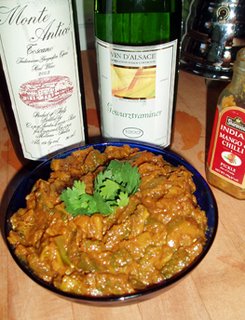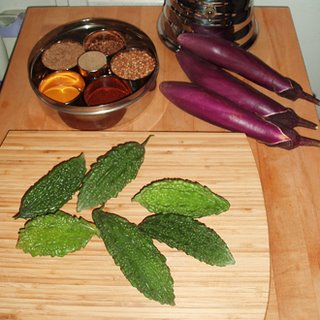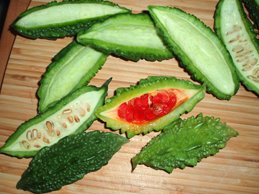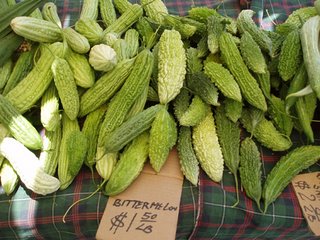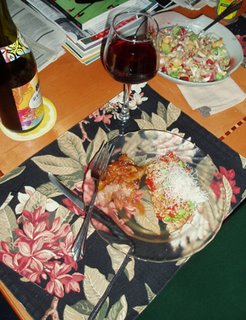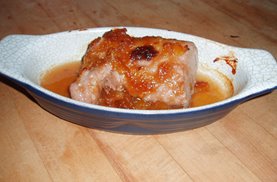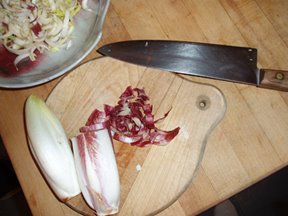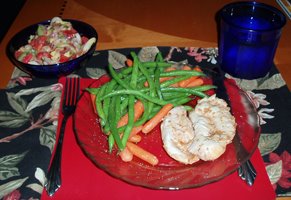 Getting Back to Basics
Getting Back to BasicsIt’s been awhile since I’ve had time to do ANY blogging. In order to make it easier, I’m going to post more ordinary, everyday recipes and menus. I've been too ambitious in my postings to this blog, so I need to scale back my ambitions.
My original intent was smaller to begin with. This was supposed to be an everyday food journal, with only occasional forays into documenting larger food adventures. Another goal was to document meals that helped me reach weight loss goals, which I think is of interest to many more people than my more elaborate adventures (even if those adventures are also healthy, low-calorie pursuits). Few people, myself included, have the time luxury to try fancy new recipes very often. So I herewith vow to DO LESS (elaborate meals) in order to DO MORE (blogging)!
Salads have long been my specialty, as my friends will tell you. Few meals I've served lack them. I've loved them since I was a kid. I have made thousands of different salads, using what's fresh and available in my kitchen, and I like to think I have a certain flair for matching those ingredients with a compatible dressing and, usually, accent ingredient (such as cheese, nuts, or croutons). Sometimes the salads I make are very traditional, sometimes they're more unusual. Some of the best salads are the simplest. Here’s a simple one that I made this evening.
Belgian Endive Tuscan Salad
1 (60g) belgian endive, chopped
1 (30g) raw cucumber, chopped
1 tbsp red onion, chopped
1 (130g) small tomato, chopped
1/4 cup (15g) sliced, dry-toasted unsalted almonds
Combine all ingredients and toss with dressing.
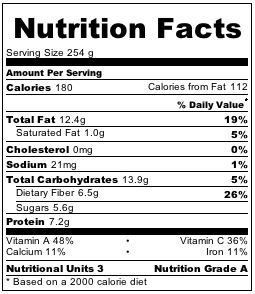 I used Trader Joe’s Tuscan Italian Dressing. I use half the recommended serving size found on most salad dressing labels. I like a lightly dressed salad, and a 2-tablespoon serving is way too much dressing for me. This of course cuts the calories in half, but at only 40 calories per tablespoon, TJ's Tuscan is relatively low to start with.
I used Trader Joe’s Tuscan Italian Dressing. I use half the recommended serving size found on most salad dressing labels. I like a lightly dressed salad, and a 2-tablespoon serving is way too much dressing for me. This of course cuts the calories in half, but at only 40 calories per tablespoon, TJ's Tuscan is relatively low to start with.I used a ripe fresh heirloom variety of tomato which was quite sweet and flavorful. The combination of its flavor and texture with the crunchy, slightly bitter endive and the crisp cucumber was a big reason this salad was so satisfying to eat. By not peeling the cucumber, I'm adding extra fiber to my meal, and I've gotten used to the taste and texture. Occasionally I'll create a salad that demands peeled cucumbers, but for a garden salad like this one, it's fine. A bit of finely chopped red onion adds just the right amount of bite. The addition of the almonds raised the overall fat content, but nuts have "good fat" that helps lower LDLs (bad cholesterol). They also add protein and fiber, and their chewy texture provides a nice contrast to the crisp veggies.
The salad accompanied a meal of chicken breast “tenders” marinated in Soy Vey Island Teriyaki Sauce. It was baked in a covered dish for 22 minutes in a 375 degree toaster oven. Even on a hot evening, this was an easy to prepare main dish. Chicken and marinade together have 228 calories.
For the side dish, I steamed green beans and baby carrots together (100g of each, about 75 calories), sprayed them with olive oil (another 18 calories) and seasoned them with salt, pepper and some table seasoning. (I like Mrs. Dash because my grandmother used it for years, and I grew fond of it. It adds no sodium to the meal, just flavor.)
Total calories for this meal: 541 calories
Analysis:
Fat - 36.7% (23 grams)
Protein - 34.1% (48 grams)
Carbohydrates - 29.2% (41 grams)
Sodium - 755 mg
Cholesterol - 102 mg
Fiber - 13 grams
